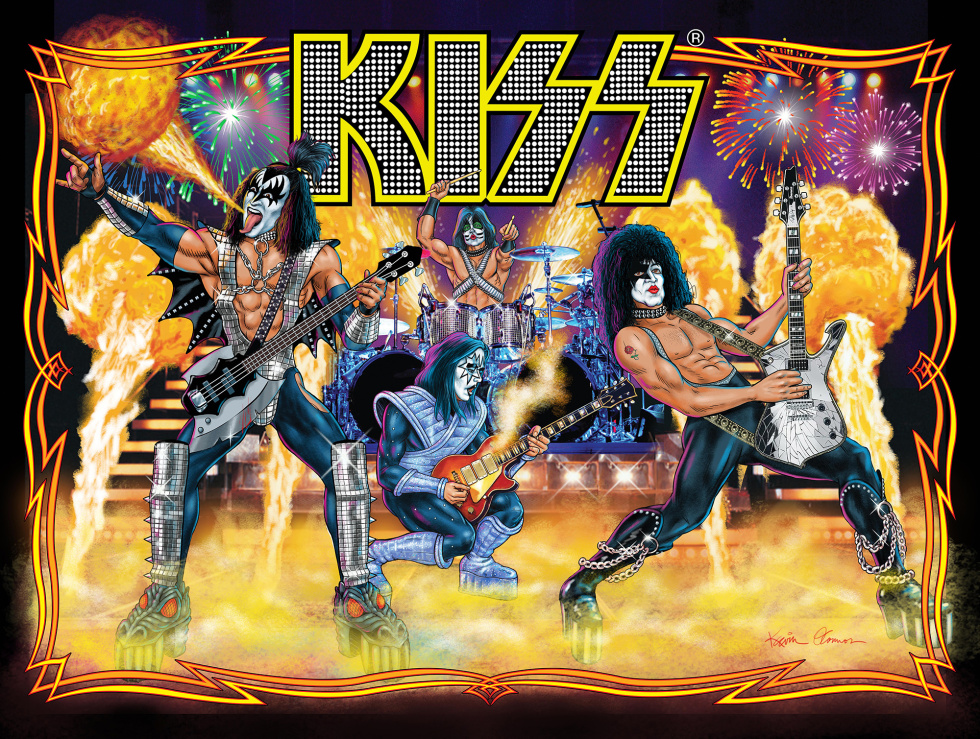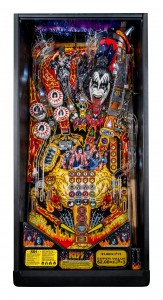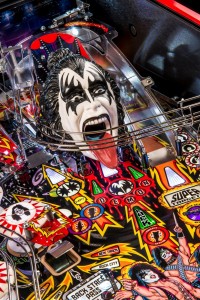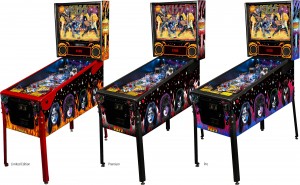Aurich Lawson | Ars Technica
 There was a time when your brand (or your band) could reach a certain status by being featured as the theme on a pinball machine. It was a sign that you had made it to the big time. In the late ’70s, Bally made pins for groups like The Rolling Stones and Kiss, adding another feather to the bands’ caps as enormous, global sensations. It’s not uncommon to see the Kiss pin pop up on eBay or Craigslist for hugely inflated dollar figures, as someone hopes a deep-pocketed Kiss fan won’t be able to resist adding a crown jewel to their collection. You know, for the fan who has everything else already, including the Kiss Kasket.
There was a time when your brand (or your band) could reach a certain status by being featured as the theme on a pinball machine. It was a sign that you had made it to the big time. In the late ’70s, Bally made pins for groups like The Rolling Stones and Kiss, adding another feather to the bands’ caps as enormous, global sensations. It’s not uncommon to see the Kiss pin pop up on eBay or Craigslist for hugely inflated dollar figures, as someone hopes a deep-pocketed Kiss fan won’t be able to resist adding a crown jewel to their collection. You know, for the fan who has everything else already, including the Kiss Kasket.
 If you’re a Kiss Army member thinking about hitting up eBay, hold on to your wallet for a moment—you’ve got a more modern option now. Stern Pinball is bringing the Kiss brand back for another round with the silver ball (much like it already did with The Stones) with a new, modern pinball design that’s dripping with nostalgia.
If you’re a Kiss Army member thinking about hitting up eBay, hold on to your wallet for a moment—you’ve got a more modern option now. Stern Pinball is bringing the Kiss brand back for another round with the silver ball (much like it already did with The Stones) with a new, modern pinball design that’s dripping with nostalgia.
The original Kiss game isn’t remembered for its gameplay, but it was a beautiful art package if you’re into the whole pyrotechnics and grown men in facepaint sort of thing. There’s a reason it’s still collector bait; it looks badass just sitting in the corner of a room. The game art was hand-drawn by Kevin O’Connor, who would go on to create classic artwork for games like Flash Gordon, Medusa, and Monster Bash. Stern wisely went back to O’Conner for the return of Kiss, and the new art is more than a little referential to the original. This is clearly a case of leaving a good thing alone, but hand-drawn art is increasingly rare in the world of pinball, and it’s a welcome look. In another direct nod, the four pop bumper caps from the original game, each featuring a band member’s face in makeup, have returned. This machine is definitely aimed straight at the heart of the nostalgia center of fans’ brains.
Stern’s new offering hopes to extend pinball past the “End of the Line”
Kiss is no stranger to branded products and merchandising. The band’s merch ranges from the extreme and bizarre (see the aforementioned Kiss-branded coffins) to the cute and pedestrian (there are Hello Kitty dolls in Kiss makeup) and even an upcoming animated crossover with Scooby Doo. You don’t have to be a cynic to see this pinball machine as another cash-in attempt. But Stern has a solid track record with taking band themes and turning them into very successful and fun games. The company’s AC/DC pinball machine is one of their best-selling titles ever, and it’s well loved for its deep and complicated risk/reward ruleset by programmer Lyman Sheats. Stern’s Metallica pin, with hand-drawn art by lowbrow artist Dirty Donny (and Lyman once again on code) is good enough that I personally sprung for a Limited Edition model myself.
It remains to be seen if the Kiss pin will be the third lighting strike for Stern’s band pins. Modern pinball relies more than ever on software, with players expecting deep rulesets that bring long-term play possibilities that help offset the steep entry costs of games. (Expect to pay close to $5,000 for even the base “Pro” model after shipping.) Unfortunately, pinball’s need for so much programming has created a bit of a dilemma; the programmers are rarely able to keep up with the demands of the manufacturing process timing. As a result, the games that ship are often set up with fairly basic rules, animations, and sound. It can take a year or more for the true potential of the game to be unlocked through software updates, making buying a new machine a bit of a waiting game. In some ways, it can be a bit like being a beta tester. Some people love being part of the process; others would rather wait for the polished product.
 I experienced this myself when I bought Stern’s Star Trek shortly after its release. I opted for the Premium model, packed full of color-changing RGB lights. It’s a beautiful game. The software, however, left something to be desired. At first, there just wasn’t enough depth to keep interest up for long-term play, even though the potential was there. After a year of sporadic updates, it has been greatly improved into a frantic shooter’s game, where you’re rewarded for constant, accurate shots and combos, and new callouts from Karl Urban (who plays Bones in the rebooted series) have brought new life to the audio. The wait was a bit of a bumpy ride, though. You never knew when or if you’d be able to download new firmware. The upside is you have a cool pin to play and learn the shots on while you wait. The downside is that by the time the software is really starting to shine, you might be tired of the game already. Smart buyers might want to wait out the software situation for a bit before committing. Or if you play one out in the wild, just be aware that it will probably get better over time, and it might be worth coming back to later to see what’s improved.
I experienced this myself when I bought Stern’s Star Trek shortly after its release. I opted for the Premium model, packed full of color-changing RGB lights. It’s a beautiful game. The software, however, left something to be desired. At first, there just wasn’t enough depth to keep interest up for long-term play, even though the potential was there. After a year of sporadic updates, it has been greatly improved into a frantic shooter’s game, where you’re rewarded for constant, accurate shots and combos, and new callouts from Karl Urban (who plays Bones in the rebooted series) have brought new life to the audio. The wait was a bit of a bumpy ride, though. You never knew when or if you’d be able to download new firmware. The upside is you have a cool pin to play and learn the shots on while you wait. The downside is that by the time the software is really starting to shine, you might be tired of the game already. Smart buyers might want to wait out the software situation for a bit before committing. Or if you play one out in the wild, just be aware that it will probably get better over time, and it might be worth coming back to later to see what’s improved.
If you don’t want to wait, though, or if you’re a big enough fan that you’re jonesing for one of the Limited Edition models that probably won’t be available later, let’s take a look at what you’re getting.
The pin features 10 Kiss songs:
- Deuce
- Hotter Than Hell
- Lick It Up
- Shout It Out Loud
- Detroit Rock City
- Calling Dr. Love
- Rock & Roll All Night
- Love Gun
- Love It Loud
- Black Diamond
Paul Stanley and Gene Simmons have recorded custom callouts and speech for the game. Stern’s new Spikesystem has something its previous music pins couldn’t boast: stereo music and sound effects, with an audio-out port for those who want to hook their game up to a more serious sound system.
The playfield toys are dominated by a huge sculpt of Gene Simmons in his “Demon” makeup, with his famous tongue extended, ready to spit out balls. There’s a clever trick with a magnet on the back wall that will grab your ball and pull it up to an upper playfield section, a feature that will certainly be shown off to guests a lot. While it doesn’t have as many as Star Trek, the game does feature color-changing RGB LED lights under some of the inserts and, for the first time for Stern, in the pop bumpers. Buyers of the Limited Edition will get a backglass that features mirrored areas, much like the original 1978 game, as well as red powdercoated hardware. I’m a fan of the mirrored back glasses. They look great, and very classic.
The MSRP for the various models is as follows: Pro Model: $5,995, Premium Model: $7,595, Limited Edition Model: $8,795. Expect to knock off at least a grand for street prices. Stern doesn’t sell directly; you have to go through a distributor, like Game Exchange of Colorado, for example. Your best bet is to contact a distributor or two (or three) and get some quotes for a shipped game.
If I get a chance to play the game or find out more about the status of the rules and software, I’ll provide updates. The gallery below has views of the cabinets and playfields, as well as a look at the original 1978 Bally game for comparison.

